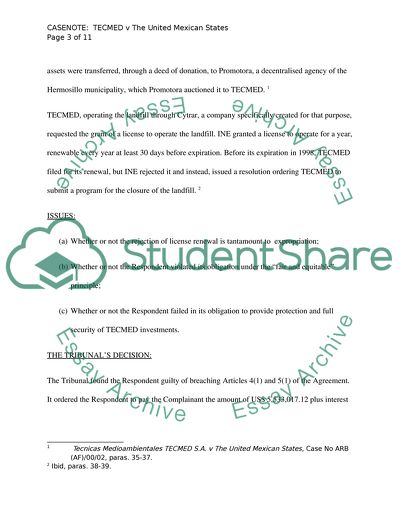Cite this document
(Tecnicas Medioambientales Case Study Example | Topics and Well Written Essays - 2000 words - 1, n.d.)
Tecnicas Medioambientales Case Study Example | Topics and Well Written Essays - 2000 words - 1. Retrieved from https://studentshare.org/environmental-studies/1743857-tecnicas-medioambientales-tecmed-sa-v-the-united-mexican-states-case-no-arb-af002-award
Tecnicas Medioambientales Case Study Example | Topics and Well Written Essays - 2000 words - 1. Retrieved from https://studentshare.org/environmental-studies/1743857-tecnicas-medioambientales-tecmed-sa-v-the-united-mexican-states-case-no-arb-af002-award
(Tecnicas Medioambientales Case Study Example | Topics and Well Written Essays - 2000 Words - 1)
Tecnicas Medioambientales Case Study Example | Topics and Well Written Essays - 2000 Words - 1. https://studentshare.org/environmental-studies/1743857-tecnicas-medioambientales-tecmed-sa-v-the-united-mexican-states-case-no-arb-af002-award.
Tecnicas Medioambientales Case Study Example | Topics and Well Written Essays - 2000 Words - 1. https://studentshare.org/environmental-studies/1743857-tecnicas-medioambientales-tecmed-sa-v-the-united-mexican-states-case-no-arb-af002-award.
“Tecnicas Medioambientales Case Study Example | Topics and Well Written Essays - 2000 Words - 1”, n.d. https://studentshare.org/environmental-studies/1743857-tecnicas-medioambientales-tecmed-sa-v-the-united-mexican-states-case-no-arb-af002-award.


